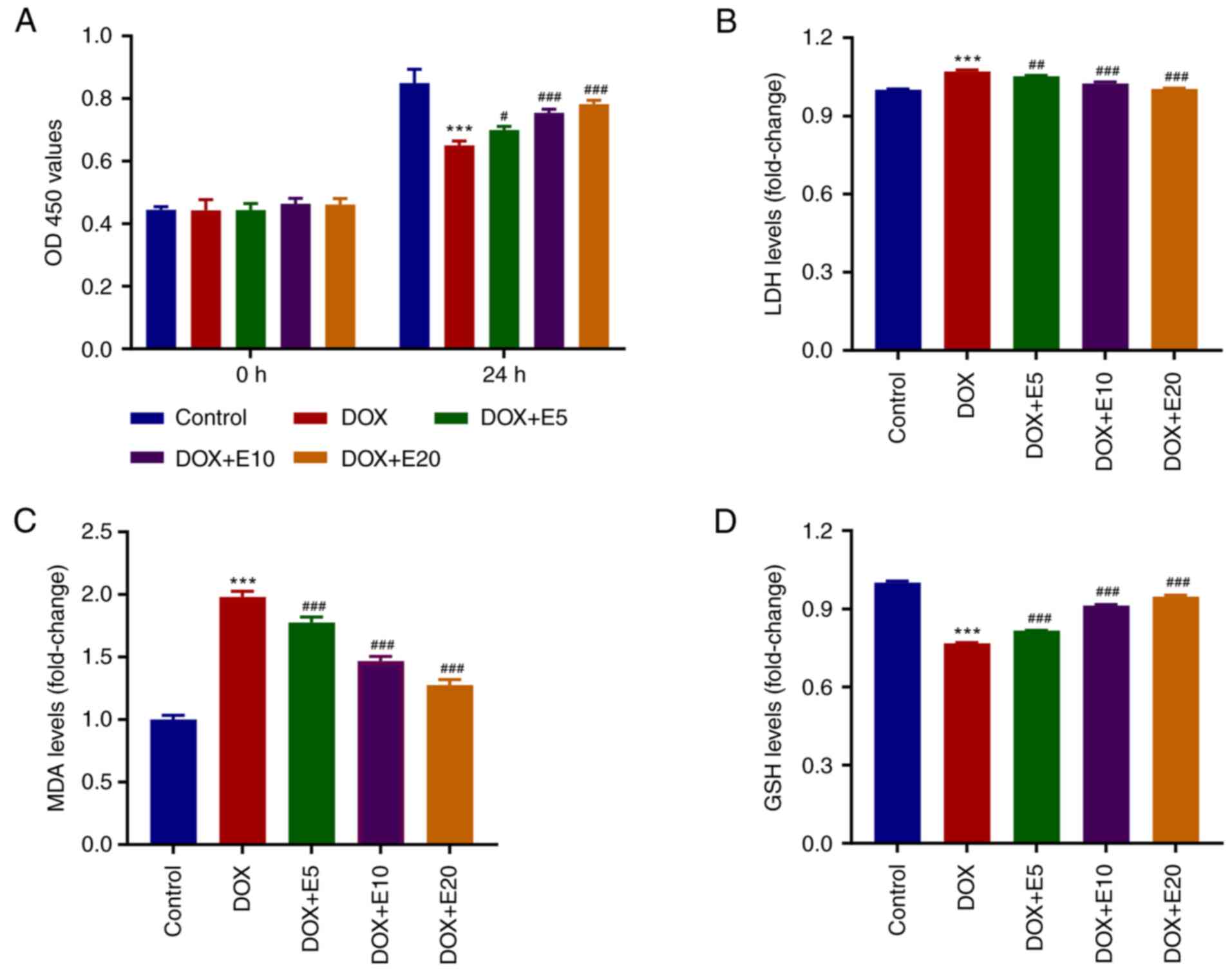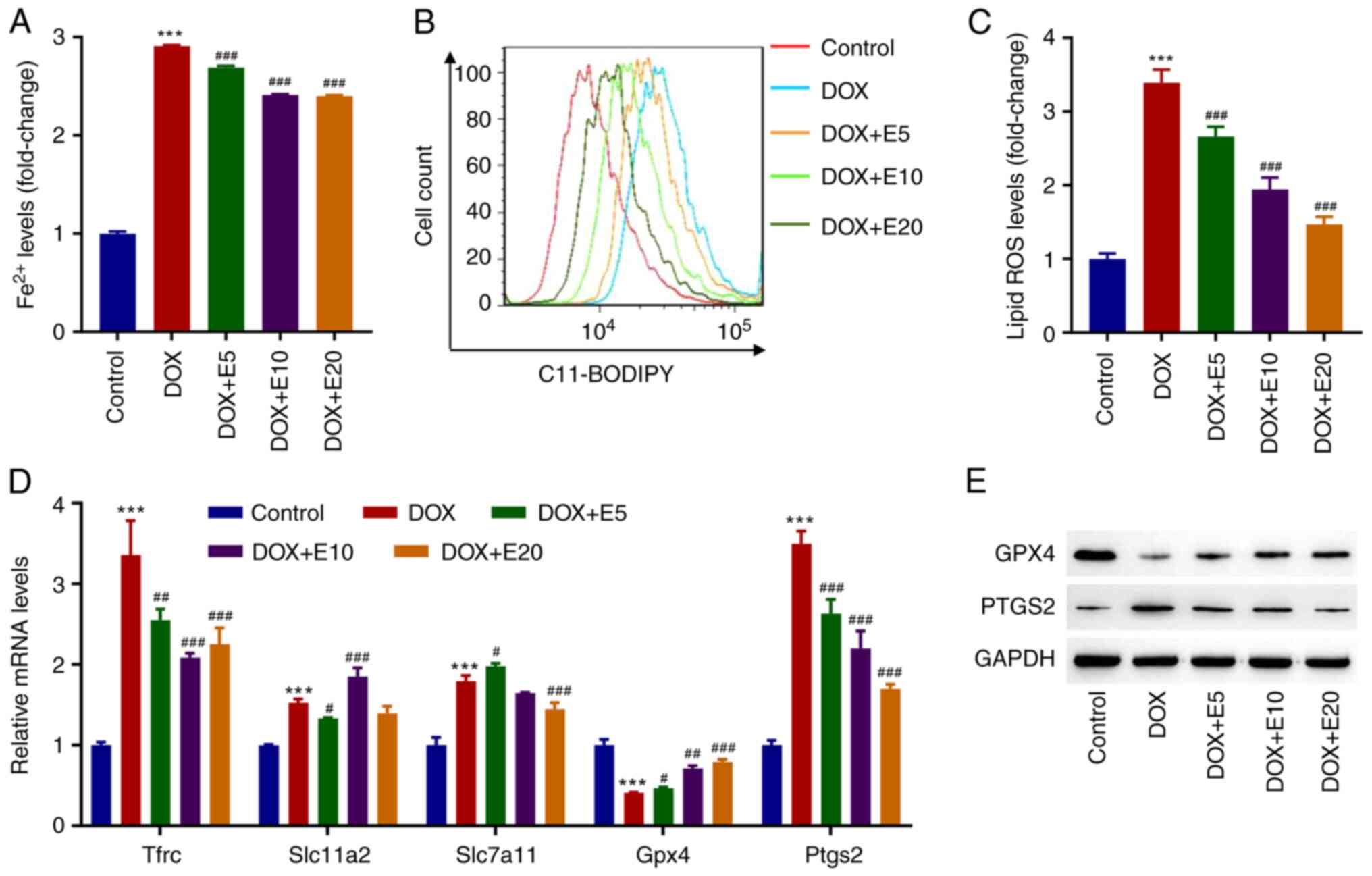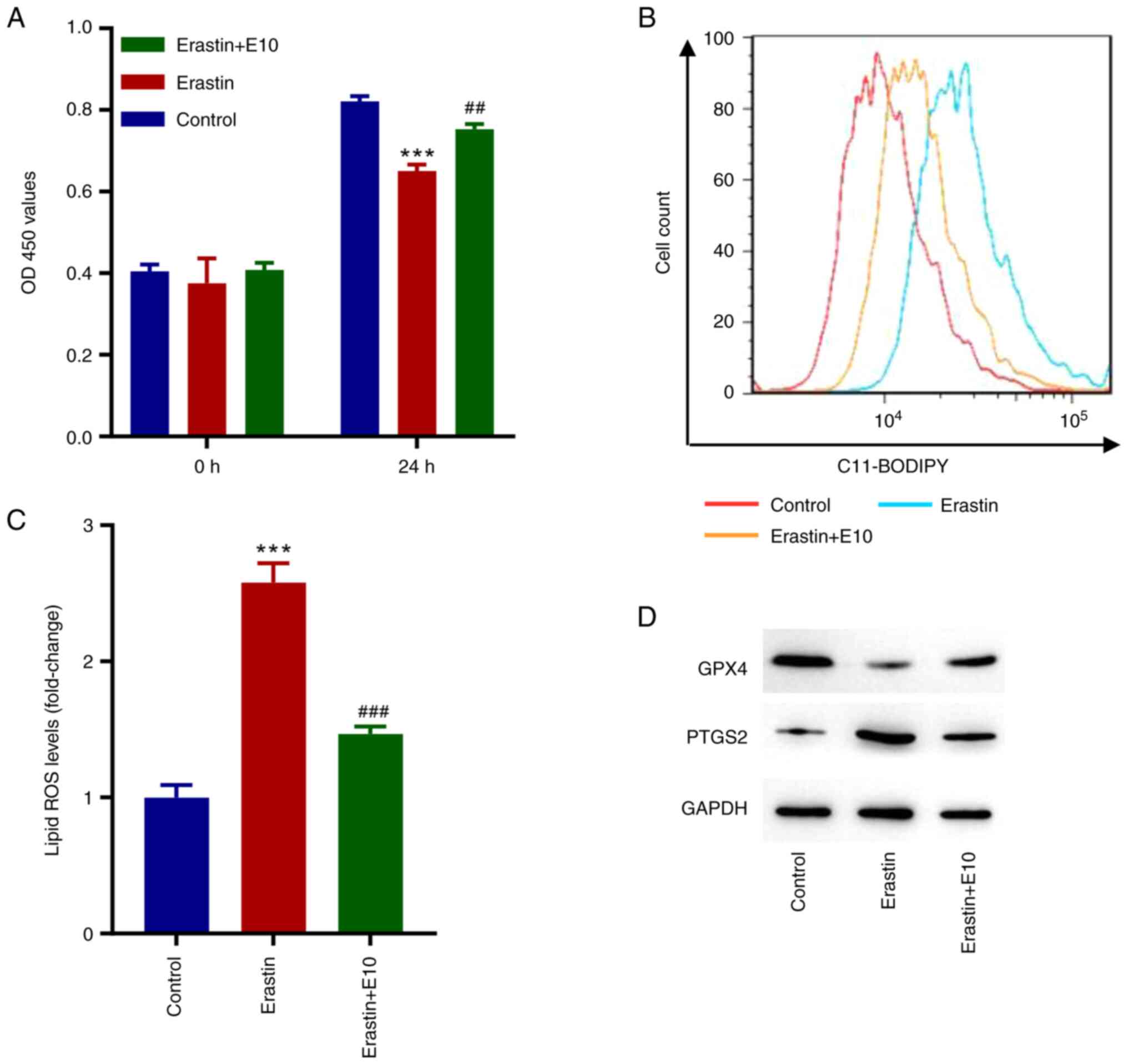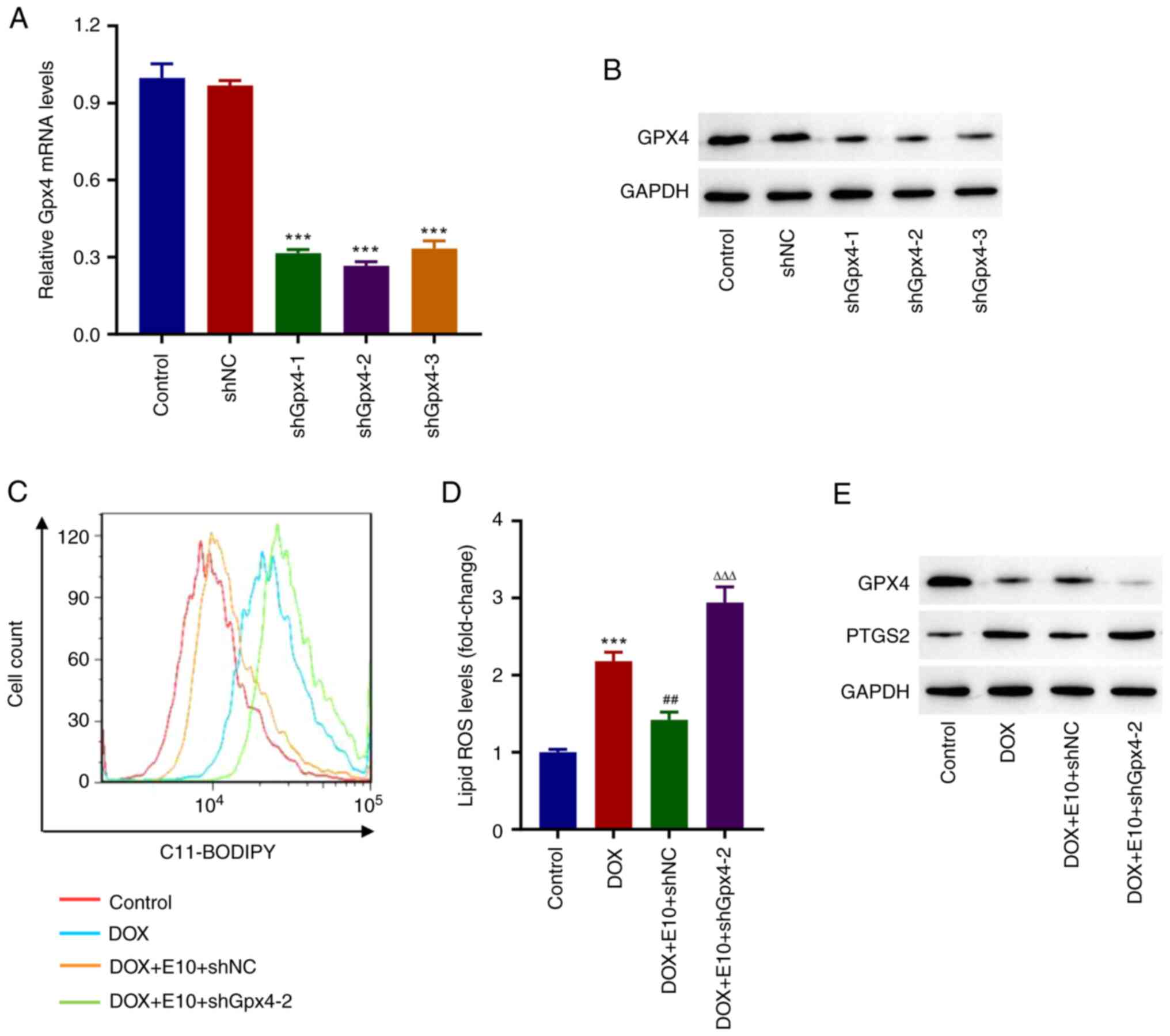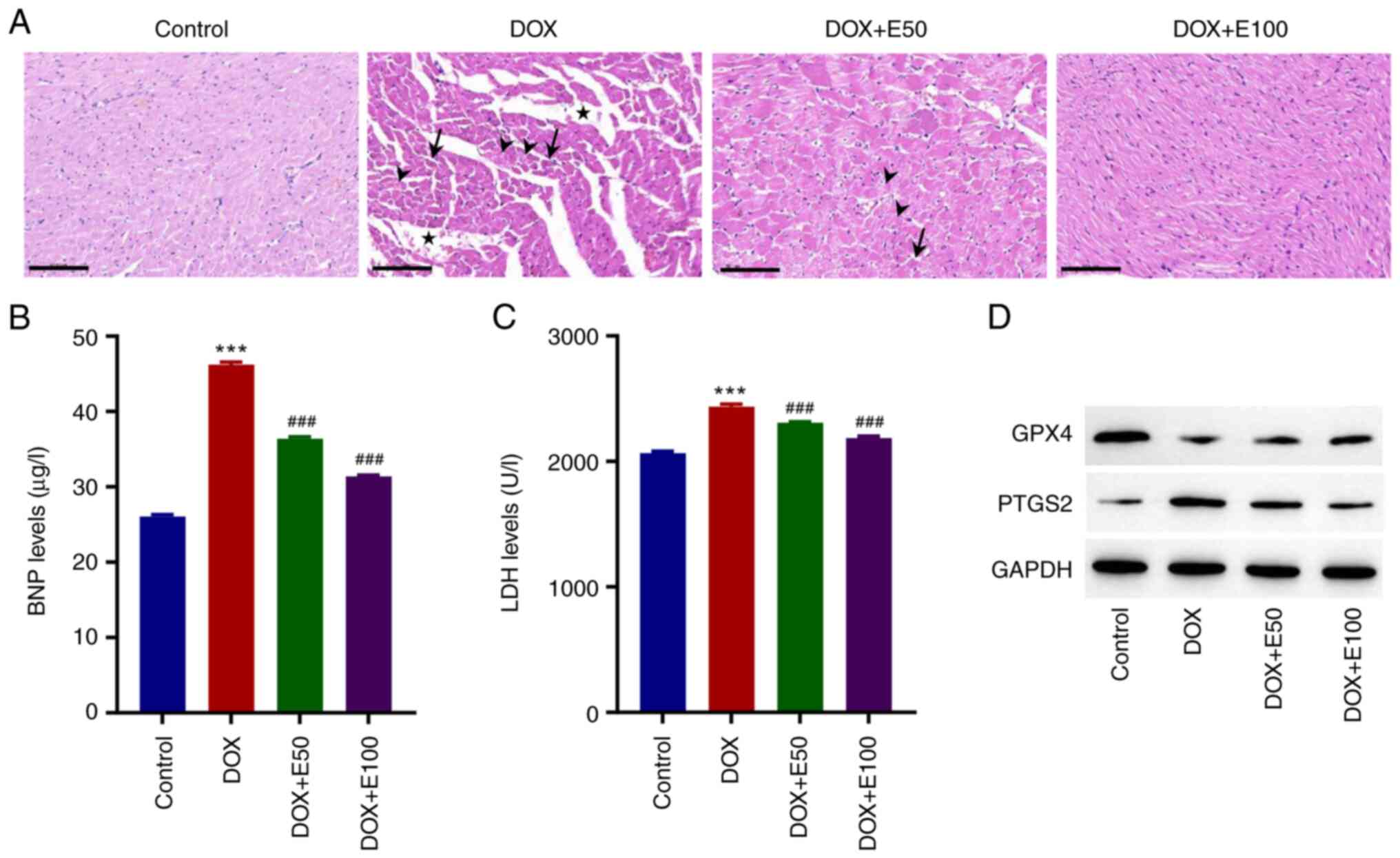|
1
|
Sola S, Mir MQS, Lerakis S, Tandon N and
Khan BV: Atorvastatin improves left ventricular systolic function
and serum markers of inflammation in nonischemic heart failure. J
Am Coll Cardiol. 47:332–337. 2006.PubMed/NCBI View Article : Google Scholar
|
|
2
|
Wen W, Zhang Z, She J, Bai X, Wu Y, Gao L,
Zhou J and Yuan Z: The predictive values of white blood cell
indices (lymphocyte and eosinophilic granulocyte) for heart failure
in acute coronary syndrome patients following percutaneous coronary
intervention: A prospective cohort study. Clin Interv Aging.
18:951–962. 2023.PubMed/NCBI View Article : Google Scholar
|
|
3
|
Khan H, Anker SD, Januzzi JL Jr, McGuire
DK, Sattar N, Woerle HJ and Butler J: Heart failure epidemiology in
patients with diabetes mellitus without coronary heart disease. J
Card Fail. 25:78–86. 2019.PubMed/NCBI View Article : Google Scholar
|
|
4
|
Hunt SA, Abraham WT, Chin MH, Feldman AM,
Francis GS, Ganiats TG, Jessup M, Konstam MA, Mancini DM, Michl K,
et al: ACC/AHA 2005 guideline update for the diagnosis and
management of chronic heart failure in the adult: A report of the
American college of cardiology/American heart association task
force on practice guidelines (writing committee to update the 2001
guidelines for the evaluation and management of heart failure):
Developed in collaboration with the American college of chest
physicians and the international society for heart and lung
transplantation: Endorsed by the heart rhythm society. Circulation.
112:e154–e235. 2005.PubMed/NCBI View Article : Google Scholar
|
|
5
|
Long K, Zhao Z, Chen J, Zhi L, Wang C,
Liao D, Wang M and Gao P: Yang-xin-xue keli exerts therapeutic
effects via regulating mitochondrial homeostasis and function in
doxorubicin-induced rat heart failure. Front Pharmacol.
13(931453)2022.PubMed/NCBI View Article : Google Scholar
|
|
6
|
Ermis N, Ulutas Z, Ozhan O, Yildiz A,
Vardi N, Colak C and Parlakpinar H: Angiotensin II type 2 receptor
agonist treatment of doxorubicin induced heart failure. Biotech
Histochem. 98:326–335. 2023.PubMed/NCBI View Article : Google Scholar
|
|
7
|
Zhuang S, Ma Y, Zeng Y, Lu C, Yang F,
Jiang N, Ge J, Ju H, Zhong C, Wang J, et al: METTL14 promotes
doxorubicin-induced cardiomyocyte ferroptosis by regulating the
KCNQ1OT1-miR-7-5p-TFRC axis. Cell Biol Toxicol. 39:1015–1035.
2023.PubMed/NCBI View Article : Google Scholar
|
|
8
|
Liao HH, Ding W, Zhang N, Zhou ZY, Ling Z,
Li WJ, Chen S and Tang QZ: Activation of AMPKα2 attenuated
doxorubicin-induced cardiotoxicity via inhibiting lipid
peroxidation associated ferroptosis. Free Radic Biol Med.
205:275–290. 2023.PubMed/NCBI View Article : Google Scholar
|
|
9
|
Syamprasad NP, Jain S, Rajdev B, Panda SR,
Gangasani JK, Challa VS, Vaidya JR, Kundu GC and Naidu VGM: AKR1B1
inhibition using NARI-29-an epalrestat analogue-alleviates
doxorubicin-induced cardiotoxicity via modulating
calcium/CaMKII/MuRF-1 axis. Chem Biol Interact.
381(110566)2023.PubMed/NCBI View Article : Google Scholar
|
|
10
|
Yang J, Ma S, Xu R, Wei Y, Zhang J, Zuo T,
Wang Z, Deng H, Yang N and Shen Q: Smart biomimetic metal organic
frameworks based on ROS-ferroptosis-glycolysis regulation for
enhanced tumor chemo-immunotherapy. J Control Release. 334:21–33.
2021.PubMed/NCBI View Article : Google Scholar
|
|
11
|
Wang R, Chen X, Li X and Wang K: Molecular
therapy of cardiac ischemia-reperfusion injury based on
mitochondria and ferroptosis. J Mol Med (Berl): Jul 28, 2023 (Epub
ahead of print).
|
|
12
|
Kumarswamy R and Thum T: Non-coding RNAs
in cardiac remodeling and heart failure. Circ Res. 113:676–689.
2013.PubMed/NCBI View Article : Google Scholar
|
|
13
|
Matsumoto T, Wada A, Tsutamoto T, Ohnishi
M, Isono T and Kinoshita M: Chymase inhibition prevents cardiac
fibrosis and improves diastolic dysfunction in the progression of
heart failure. Circulation. 107:2555–2558. 2003.PubMed/NCBI View Article : Google Scholar
|
|
14
|
Zy A, Gd A, Xu CA, Qin X, Xu H, Zeng B,
Ren J, Zheng Q and Wang S: Beclin1 haploinsufficiency rescues low
ambient temperature-induced cardiac remodeling and contractile
dysfunction through inhibition of ferroptosis and mitochondrial
injury. Metabolism. 113(154397)2020.PubMed/NCBI View Article : Google Scholar
|
|
15
|
Chen X, Xu S, Zhao C and Liu B: Role of
TLR4/NADPH oxidase 4 pathway in promoting cell death through
autophagy and ferroptosis during heart failure. Biochem Biophys Res
Commun. 516:37–43. 2019.PubMed/NCBI View Article : Google Scholar
|
|
16
|
Zhang H, Zhabyeyev P, Wang S and Oudit GY:
Role of iron metabolism in heart failure: From iron deficiency to
iron overload. Biochim Biophys Acta Mol Basis Dis. 1865:1925–1937.
2019.PubMed/NCBI View Article : Google Scholar
|
|
17
|
Zhang D, Li H and Wang JB: Echinacoside
inhibits amyloid fibrillization of HEWL and protects against
Aβ-induced neurotoxicity. Int J Biol Macromol. 72:243–253.
2015.PubMed/NCBI View Article : Google Scholar
|
|
18
|
Yang X, Li F, Yang Y, Shen J, Zou R, Zhu
P, Zhang C, Yang Z and Li P: Efficacy and safety of echinacoside in
a rat osteopenia model. Evid Based Complement Alternat Med.
2013(926928)2013.PubMed/NCBI View Article : Google Scholar
|
|
19
|
Livak KJ and Schmittgen TD: Analysis of
relative gene expression data using real-time quantitative PCR and
the 2(-Delta Delta C(T)) method. Methods. 25:402–408.
2001.PubMed/NCBI View Article : Google Scholar
|
|
20
|
Yao L, Gui M, Li J, Lu B, Wang J, Zhou X
and Fu D: Shengxian decoction decreases doxorubicin-induced cardiac
apoptosis by regulating the TREM1/NF-κB signaling pathway. Mol Med
Rep. 23(219)2021.PubMed/NCBI View Article : Google Scholar
|
|
21
|
Chen H, Wang L, Liu J, Wan Z, Zhou L, Liao
H and Wan R: LncRNA ITGB2-AS1 promotes cisplatin resistance of
non-small cell lung cancer by inhibiting ferroptosis via activating
the FOSL2/NAMPT axis. Cancer Biol Ther. 24(2223377)2023.PubMed/NCBI View Article : Google Scholar
|
|
22
|
Yuan H, Xia P, Sun X, Ma J, Xu X, Fu C,
Zhou H, Guan Y, Li Z, Zhao S, et al: Photothermal nanozymatic
nanoparticles induce ferroptosis and apoptosis through tumor
microenvironment manipulation for cancer therapy. Small.
18(e2202161)2022.PubMed/NCBI View Article : Google Scholar
|
|
23
|
Aurigemma GP, Gottdiener JS, Shemanski L,
Gardin J and Kitzman D: Predictive value of systolic and diastolic
function for incident congestive heart failure in the elderly: The
cardiovascular health study. J Am Coll Cardiol. 37:1042–1048.
2001.PubMed/NCBI View Article : Google Scholar
|
|
24
|
Bonsu KO, Owusu IK, Buabeng KO, Reidpath
DD and Kadirvelu A: Review of novel therapeutic targets for
improving heart failure treatment based on experimental and
clinical studies. Ther Clin Risk Manag. 12:887–906. 2016.PubMed/NCBI View Article : Google Scholar
|
|
25
|
Ni Y, Zhang J, Zhu W, Duan Y, Bai H and
Luan C: Echinacoside inhibited cardiomyocyte pyroptosis and
improved heart function of HF rats induced by isoproterenol via
suppressing NADPH/ROS/ER stress. J Cell Mol Med. 26:5414–5425.
2022.PubMed/NCBI View Article : Google Scholar
|
|
26
|
Landmesser U, Spiekermann S, Dikalov S,
Tatge H, Wilke R, Kohler C, Harrison DG, Hornig B and Drexler H:
Vascular oxidative stress and endothelial dysfunction in patients
with chronic heart failure: Role of xanthine-oxidase and
extracellular superoxide dismutase. Circulation. 106:3073–3078.
2002.PubMed/NCBI View Article : Google Scholar
|
|
27
|
Xiang XY, Yang XC, Su J, Kang JS, Wu Y,
Xue YN, Dong YT and Sun LK: Inhibition of autophagic flux by ROS
promotes apoptosis during DTT-induced ER/oxidative stress in HeLa
cells. Oncol Rep. 35:3471–3479. 2016.PubMed/NCBI View Article : Google Scholar
|
|
28
|
Ergüç A, Karakuş F, Arzuk E, Mutlu N and
Orhan H: Role of oxidative stress and reactive metabolites in
cytotoxicity & mitotoxicity of clozapine, diclofenac and
nifedipine in CHO-K1 cells in vitro. Endocr Metab Immune Disord
Drug Targets: Apr 19, 2023 (Epub ahead of print).
|
|
29
|
Granieri MC, Rocca C, De Bartolo A,
Nettore IC, Rago V, Romeo N, Ceramella J, Mariconda A, Macchia PE,
Ungaro P, et al: Quercetin and its derivative counteract
palmitate-dependent lipotoxicity by inhibiting oxidative stress and
inflammation in cardiomyocytes. Int J Environ Res Public Health.
20(3492)2023.PubMed/NCBI View Article : Google Scholar
|
|
30
|
Turk R, Juretić D, Geres D, Svetina A,
Turk N and Flegar-Mestrić Z: Influence of oxidative stress and
metabolic adaptation on PON1 activity and MDA level in transition
dairy cows. Anim Reprod Sci. 108:98–106. 2008.PubMed/NCBI View Article : Google Scholar
|
|
31
|
Ichihara S, Yamada Y, Kawai Y, Osawa T,
Furuhashi K, Duan Z and Ichihara G: Roles of oxidative stress and
Akt signaling in doxorubicin cardiotoxicity. Biochem Biophys Res
Commun. 359:27–33. 2007.PubMed/NCBI View Article : Google Scholar
|
|
32
|
Birari L, Wagh S, Patil KR, Mahajan UB,
Unger B, Belemkar S, Goyal SN, Ojha S and Patil CR: Aloin
alleviates doxorubicin-induced cardiotoxicity in rats by abrogating
oxidative stress and pro-inflammatory cytokines. Cancer Chemother
Pharmacol. 86:419–426. 2020.PubMed/NCBI View Article : Google Scholar
|
|
33
|
Gaggin HK and Januzzi JL Jr: Biomarkers
and diagnostics in heart failure. Biochim Biophys Acta.
1832:2442–2450. 2013.PubMed/NCBI View Article : Google Scholar
|
|
34
|
Salah K, Stienen S, Pinto YM, Eurlings LW,
Metra M, Bayes-Genis A, Verdiani V, Tijssen JGP and Kok WE:
Prognosis and NT-proBNP in heart failure patients with preserved
versus reduced ejection fraction. Heart. 105:1182–1189.
2019.PubMed/NCBI View Article : Google Scholar
|
|
35
|
Liu B, Zhao C, Li H, Chen X, Ding Y and Xu
S: Puerarin protects against heart failure induced by pressure
overload through mitigation of ferroptosis. Biochem Biophys Res
Commun. 497:233–240. 2018.PubMed/NCBI View Article : Google Scholar
|
|
36
|
Conrad M and Proneth B: Broken hearts:
Iron overload, ferroptosis and cardiomyopathy. Cell Res.
29:263–264. 2019.PubMed/NCBI View Article : Google Scholar
|
|
37
|
Fang X, Cai Z, Wang H, Han D, Cheng Q,
Zhang P, Gao F, Yu Y, Song Z, Wu Q, et al: Loss of cardiac ferritin
H facilitates cardiomyopathy via Slc7a11-mediated ferroptosis. Circ
Res. 127:486–501. 2020.PubMed/NCBI View Article : Google Scholar
|
|
38
|
Fang X, Wang H, Han D, Xie E, Yang X, Wei
J, Gu S, Gao F, Zhu N, Yin X, et al: Ferroptosis as a target for
protection against cardiomyopathy. Proc Natl Acad Sci USA.
116:2672–2680. 2019.PubMed/NCBI View Article : Google Scholar
|
|
39
|
Miess H, Dankworth B, Gouw AM, Rosenfeldt
M, Schmitz W, Jiang M, Saunders B, Howell M, Downward J, Felsher
DW, et al: The glutathione redox system is essential to prevent
ferroptosis caused by impaired lipid metabolism in clear cell renal
cell carcinoma. Oncogene. 37:5435–5450. 2018.PubMed/NCBI View Article : Google Scholar
|
|
40
|
Wu T, Liang X, Liu X, Li Y, Wang Y, Kong L
and Tang M: Induction of ferroptosis in response to graphene
quantum dots through mitochondrial oxidative stress in microglia.
Part Fibre Toxicol. 17(30)2020.PubMed/NCBI View Article : Google Scholar
|
|
41
|
Paterek A, Mackiewicz U and Mączewski M:
Iron and the heart: A paradigm shift from systemic to cardiomyocyte
abnormalities. J Cell Physiol. 234:21613–21629. 2019.PubMed/NCBI View Article : Google Scholar
|
|
42
|
Cheng CF and Lian WS: Prooxidant
mechanisms in iron overload cardiomyopathy. Biomed Res Int.
2013(740573)2013.PubMed/NCBI View Article : Google Scholar
|
|
43
|
Chen L, Yin Z, Qin X, Zhu X, Chen X, Ding
G, Sun D, Wu NN, Fei J, Bi Y, et al: CD74 ablation rescues type 2
diabetes mellitus-induced cardiac remodeling and contractile
dysfunction through pyroptosis-evoked regulation of ferroptosis.
Pharmacol Res. 176:2022.PubMed/NCBI View Article : Google Scholar
|
|
44
|
Yang WS, SriRamaratnam R, Welsch ME,
Shimada K, Skouta R, Viswanathan VS, Cheah JH, Clemons PA, Shamji
AF, Clish CB, et al: Regulation of ferroptotic cancer cell death by
GPX4. Cell. 156:317–331. 2014.PubMed/NCBI View Article : Google Scholar
|
|
45
|
Wu J, Minikes AM, Gao M, Bian H, Li Y,
Stockwell BR, Chen ZN and Jiang X: Intercellular interaction
dictates cancer cell ferroptosis via NF2-YAP signalling. Nature.
572:402–406. 2019.PubMed/NCBI View Article : Google Scholar
|
|
46
|
Ren J, Privratsky JR, Yang X, Dong F and
Carlson EC: Metallothionein alleviates glutathione
depletion-induced oxidative cardiomyopathy in murine hearts. Crit
Care Med. 36:2106–2116. 2008.PubMed/NCBI View Article : Google Scholar
|















